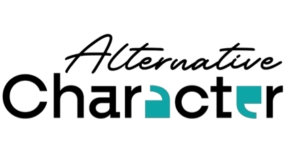Strategic Content Governance: A Framework for Business Performance and Scalability
In today’s digital environment, robust and efficient content management is a key differentiator for enterprises. Organizations that implement strong content governance frameworks are better equipped to manage complexity, maintain consistency, and scale efficiently. This article outlines the fundamentals of content governance, its core components, and practical tools to assess and improve your current practices.
Understanding Content Governance
Content governance is a structured approach to managing the entire content lifecycle—creation, review, publication, and archival. It encompasses standards, roles, workflows, tools, and evaluation mechanisms that ensure content remains accurate, high-quality, consistent, and compliant across all platforms.
This framework supports better collaboration, improves operational efficiency, and aligns content practices with organizational goals.
Core Components of an Effective Content Governance Framework
1. Roles and Responsibilities
- Clearly define roles for content creation, review, publishing, and archiving.
- Establish ownership and accountability within and across teams.
2. Guidelines and Standards
- Develop standards for voice, tone, and style to ensure unified messaging.
- Ensure accessibility compliance across all content types and channels.
3. Workflow Management
- Optimize processes for content creation, editing, approvals, publishing, and updates.
- Minimize duplication and delays by clearly defining each step in the workflow.
4. Content Audits
- Conduct regular audits to identify outdated, inconsistent, or redundant content.
- Use audit insights to drive content improvements and align with strategy.
5. Metadata and Taxonomy
- Implement structured metadata to improve content organization, searchability, and retrieval.
- Use consistent taxonomy to support user experience and backend management.
6. Technology Integration
- Use tools that automate workflows, monitor governance activity, and generate analytics.
- Ensure technology supports scalability and integration across systems.
7. Evaluation and Continuous Improvement
- Track key metrics such as engagement, content freshness, and performance.
- Use data insights to inform governance updates and long-term strategy.
Benefits of Content Governance
- Consistent Brand Identity: Ensures uniform messaging and strengthens brand credibility.
- Efficient Operations: Reduces manual effort, rework, and bottlenecks.
- Regulatory Compliance: Supports accessibility and legal requirements.
- Improved ROI: Higher content quality improves engagement and conversion rates.
- Informed Decision-Making: Data from audits and analytics leads to better strategic choices.
Content Governance Checklist
- Defined roles and responsibilities
- Documented voice, tone, and accessibility guidelines
- Streamlined workflows for creation, review, and archiving
- Regularly scheduled content audits
- Structured metadata and taxonomy
- Integration of automation and monitoring tools
- Metrics for engagement and performance
- Continuous review and updates to governance practices
Content Governance Scorecard
Use this scorecard to evaluate your organization’s performance across seven key governance components. Rate each one on a scale from 1 to 5 using the descriptions provided. The third column is left blank for scoring.
| Component | Rating Scale (1–5) | Your Score |
|---|---|---|
| Roles & Responsibilities | 1 – No roles defined 2 – Informal or unclear roles 3 – Defined but inconsistently applied 4 – Clear and structured roles 5 – Fully defined, enforced, and scalable roles |
|
| Guidelines & Standards | 1 – No documented guidelines 2 – Basic guidelines exist 3 – Guidelines partially used 4 – Consistent application 5 – Comprehensive, maintained, and enforced |
|
| Workflow Management | 1 – No formal workflow 2 – Ad-hoc processes 3 – Defined but inconsistently followed 4 – Standardized workflow 5 – Optimized, monitored, and improved |
|
| Content Audits | 1 – Never audited 2 – Rare or informal audits 3 – Occasional, partial audits 4 – Regular and structured audits 5 – Systematic audits with follow-up |
|
| Metadata & Taxonomy | 1 – No metadata strategy 2 – Inconsistent tagging 3 – Basic taxonomy in use 4 – Structured and searchable metadata 5 – Robust taxonomy, enterprise-wide |
|
| Technology Integration | 1 – No tools in place 2 – Limited or manual tools 3 – Tools partially implemented 4 – Integrated tools 5 – Fully automated and scalable |
|
| Evaluation & Improvement | 1 – No measurement 2 – Basic tracking 3 – Metrics tracked but underused 4 – Metrics used regularly 5 – Data-driven with continuous optimization |
Conclusion
Content governance is not just a set of guidelines or workflows—it’s a foundational structure that enables organizations to scale content operations, maintain consistency, and adapt to change. By implementing a well-defined framework and regularly evaluating its performance, businesses can improve operational efficiency, ensure compliance, and deliver content that supports both user needs and strategic goals.
Use the checklist and scorecard as ongoing tools to assess your governance maturity, identify areas for improvement, and align teams around shared standards. In a content-driven world, strong governance is not an option—it’s a necessity.
